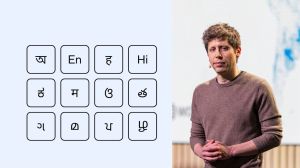How to make India a truly secular nation
...

| |
|
|
Casting secularism in terms of communal parity is suffocating. The parity model simply produces untenable politics. |
There is a story of a man who was looking for a key under a lamp post. Asked why he was look-ing for a key at that particular spot, he is report-ed to have replied: ‘Oh, I know that I lost my key elsewhere, but I am looking for it here because there seems to be some light under the lamp post’. So it is with a lot of Indian discussions on secular-ism. We all hover around the lamp post of secularism, not because we lost the key there, but because we think there is light under this ideal.
There is no doubt about the absolute necessity of secu-larism as a political ideal, where the civil, political and social rights of individuals are made independent of any religious affiliation they may carry. But the threat to political secular-ism does not come from religion. It comes rather from com-munalism, and a misunderstanding of what freedom entails. Communalism is the cluster of attitudes that targets individuals for simply being who they are, and thinks political rights should be a function of community affiliation. But if communalism is the great threat, then the place where we lost the key is not secularism, it is nationalism. We keep on interrogating religion, to disguise the fact that communalism is the offspring of nationalism. Communalism is a product of the unrealisable hopes of nationalism, not an offshoot of religious piety.
How does nationalism produce communalism? Nationalism seeks to benchmark ‘identity’. But every attempt to benchmark Indian iden-tity, define it in terms of litmus tests, will produce mischief that pits com-munities against each other. Nation-alism, like communalism, is a col-lective narcissism that puts identity before rights, purity before freedom, collective idolatry over individuali-ty, sameness over a capacity to nego-tiate difference, descent over pos-sible futures, and unity over justice. The moral psychology of nation-alism is the same as that of commu-nalism; even the most expansive and generous notion of nationalism can-not entirely escape the violence and abridgment of possibilities that any collective identity entails.
Politically what India needs is not so much a new conception of Indian identity, one that emphasis-es pluralism and compositeness. Rather, what we need is a social con-tract on how we respect and deal with those with whom we disagree about India’s identity. We don’t need to ask: what do we share? Rather we need to ask: what are the terms on which we relate to those with whom we disagree about what we share or with whom we share nothing at all.
The challenge is not to find some-thing we share, the challenge is to find ways of negotiating difference. Does all this mean that India does not have an identity? If this demand implies that there is something we all unequivocally share, the answer is ‘no’. But it does not preclude the thought that we all have lots of different reasons and ways in which we define our relationships with each other. There is no ‘unity’ in diversity, rather we are diverse in our uni-ties, and we might identify with connec-tions to India, each in our own way. But any attempt to produce an authoritative conception of India will be fraught with exclusion and violence. We should take some heart from the fact that usually it does not occur to any-body to doubt whether India has an identity, until someone begins to give arguments to prove it. The spontaneous con-versation of India produces a thousand entanglements that bind us; a politics obsessed with unity will produce the forces that tear us apart.
The second weakness in our articulation of secularism is this. It has seldom been concerned with the value of indi-vidual liberty. Different versions of secularism—secularism as communal harmony, secularism as respect for all religions, secularism as a project for giving different groups their own space to collectively define their identities—are less moti-vated by a concern for individual liberty. These versions of secularism are not averse to using state power to advance religious ends, provided some kind of parity between different communities is maintained. So, on this view, it is alright for the state to ban practices offensive to Hindus so long as it does the same for Muslims and so forth. So long as the state demon-strates equal treatment for commu-nities, on this view, secularism stands vindicated. But casting secu-larism in terms of communal pari-ty is misleading and suffocating.
The parity model produced an untenable politics. Governments established their secular credentials by giving one concession to a partic-ular religious community and then offset it by granting concessions to other communities in a process of competitive bidding that left all communities feeling that they had lost. This parity model was suffocat-ing in so far as it put respecting reli-gion or collective identities above the cause of protecting individual freedoms. To say that the state should use its coercive powers to express “respect” towards all religions equally is by no stretch of the imagination the same thing as saying that each individual ought to have as much freedom as is compatible with a similar freedom for others.
In short, the only sustainable conception of secularism is one that is tied to a project of building a society of free and equal individuals. It is based on recognising the radicalness of the claim that Emerson best articulated: “no society can ever be as large as a single individual.” This is the only antidote to collective narcissism, the only real threat to secularism.



- 01
- 02
- 03
- 04
- 05




























